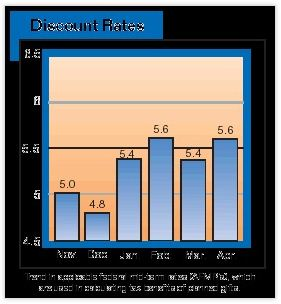Many donors and endowment managers would agree that the performance of the Dow Jones Industrial Average and the broader investment markets as well have been somewhat disappointing since the end of the meteoric increases of the 1990s.
History has shown us that various fund-raising approaches are affected in different ways by changes in the economy. During boom times new wealth is created and some of it is given away. Major gift development efforts and capital campaigns flourish in such an environment. In leaner times, economic uncertainty may cause donors’ and consumers’ attitudes to change, and they may alter their charitable giving plans somewhat in the process. Perhaps as a result of increased economic conservatism, planned giving programs seem to do well during such times. While current giving plans may be put on hold, estate gifts are less likely to be changed and ironically planned giving may become more interesting to wealthier donors who would be more likely to make outright gifts of cash or other property during prosperous times. In the current economic environment, the choice may not be between a major and a planned gift, but rather between a planned gift and no gift at all.
An understanding of the effect of recent market declines and lower interest rates from a gift planning perspective may prove valuable to development executives and donors alike. Dividend yields on the Dow have fallen over 70% since 1990. Interest rates on money market accounts, CDs, and bonds have also fallen dramatically during this time. Obviously these trends must to some extent affect the spending, saving, and giving habits of Americans. Those who have retired and no longer have an “earned income” may be more affected than those still in the workplace. In the meantime, however, overall asset values have increased dramatically over the past decade, and those gains still exist in the portfolios of millions of American seniors. These assets can and will continue to fuel growth in bequests and other planned gifts.
What’s a donor to do?
With careful planning, donors may be able to improve their personal cash-flow situation, while also arranging significant gifts to benefit favorite causes. It may be helpful to consider a few different gift planning scenarios.
Case 1

Consider a widow who inherited a $1 million stock portfolio in 1990 when the Dow was trading around 2,500. If her dividend yield was 3.75% at that time, she would have received $37,500 per year. Moving forward to the present, assume her portfolio value has increased fourfold to $4 million with the Dow trading around the 10,000 level. While her wealth has grown, her income has been stagnant. With a current dividend yield of around 1%, she would still be receiving some $40,000 annually. In light of economic uncertainty, creative accounting scandals, and world unrest, she feels that the stock market is a risky place and is disappointed with her cash-flow. After consultation with her financial advisors and favorite charities, she decides to use one quarter of her portfolio—appreciated stock worth $1 million—to fund a 5% charitable remainder unitrust. By doing so, she receives these benefits:
- Her combined income from the trust and remaining securities is doubled to $80,000 per year.
- Avoidance of capital gains tax at the time of transfer on the increased value of the assets used to fund her gift.
- A significant current income tax deduction for establishing a charitable remainder trust.
- A large portion of the trust payments will most likely be taxed at less than ordinary income tax rates under the four-tier payout system.
- Increased diversification on a tax-free basis with possibility of growth in her income over time.
- A significant charitable gift of the remainder for her favorite charities.
- Access to the remainder of the portfolio, which is still three times larger than it was in 1990 and may continue to grow.
Case 2
Consider a childless couple who retired in 1990 and now have a $4 million portfolio. They are living a comfortable life, but would like to travel more and anticipate increased healthcare and living costs in the future. They are very nervous about the stock market. They decide to use three-quarters of their stock portfolio to fund a charitable remainder annuity trust, which will pay them 7% annually. The $210,000 per year income is more than twice their combined income prior to retirement, plus they still have $1 million in stock and enjoy many of the other benefits enumerated above.
Case 3
Finally consider Jane, a recently retired schoolteacher who had anticipated a comfortable retirement with interest from CDs and dividends from her mutual funds to supplement Social Security and her teacher’s retirement plan. However, the mutual funds have stopped growing the past few years and she has had to pay capital gains tax on several of them. Her CDs that are maturing cannot be replaced anywhere near the previous rates. Based on these circumstances, Jane elects to use funds from two CDs and a mutual fund to enter into a charitable gift annuity arrangement with her favorite charity. In addition to freeing herself from investment worries, locking in attractive payments for life (a large portion of which are tax-free for her life expectancy), she receives a charitable tax deduction which is large enough to provide benefits from it for several years, all while helping a cause close to her heart.

